A simple & refreshing vegan Japanese side dish you can make in 15 minutes!
Are you looking for a light, crunchy, and flavorful vegan Japanese side dish that feels like something from a peaceful temple lunch?
Say hello to this easy salad made with kiriboshi daikon (dried daikon radish), cucumber, and a delicious sesame-vinegar dressing.
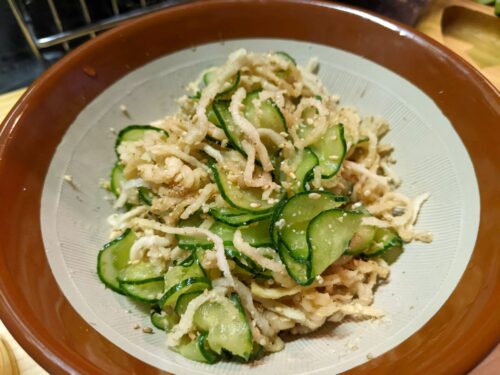
This dish is inspired by shojin ryori, the traditional plant-based cuisine of Japanese Buddhist monks—but it’s totally doable in any home kitchen, no robes or chanting required. 😉
🌱 What Is Kiriboshi Daikon?
Kiriboshi daikon is dried daikon radish, a classic pantry item in Japanese cooking. When rehydrated, it has a wonderfully chewy texture and soaks up flavors like a sponge.
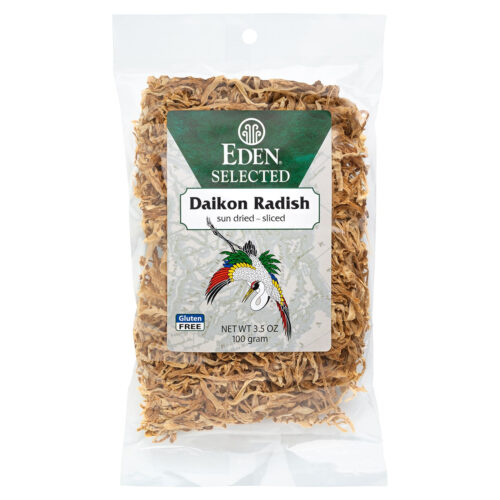
It’s high in fiber, naturally sweet, and perfect for vegan cooking. You can usually find it at Asian grocery stores. Also I found this Japanese blog and WHOLE FOODS has this organic kiriboshi daikon!
In our home, kiriboshi daikon is more than just a side dish—it’s a snack!
My daughter has loved it since she was a baby. Even when she was under one year old, she enjoyed munching on it just as it is—dry and unsoaked!
It has a light, natural sweetness that surprises many people the first time they try it. The chewy texture and subtle flavor make it incredibly satisfying, even without any seasoning.
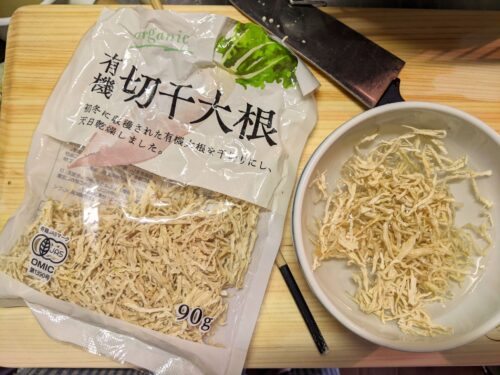
That said, because it’s dried, don’t forget to offer a little water alongside if you’re serving it as a snack, especially for little ones. It’s a great way to enjoy something healthy, simple, and full of fiber.
🥒 How to make Kiriboshi Daikon & Cucumber salad
✨ Vegan, gluten-free, and ready in under 20 minutes.
Ingredients (Serves 2)
🔪 Instructions
1. Rehydrate the daikon
Rinse the kiriboshi daikon quickly under water, then soak it in a bowl of water for about 10 minutes, or until softened.
Drain well, squeeze out the water gently.
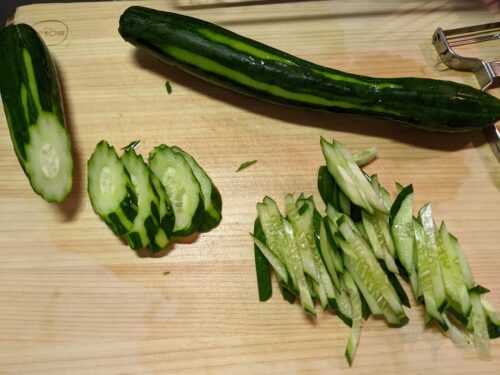
2. Prep the cucumber
Slice the cucumber thinly using a slicer (you can also julienne it if you like a crunchier texture).
Sprinkle with 1/3 tsp of salt, mix gently, and let it sit for about 5-10 minutes.
Once it softens and releases some liquid, squeeze out the excess moisture.
3. Make the dressing
In a mixing bowl, combine the ingredients in [A] . Mix well until smooth.
If you have a little extra time, try grinding the sesame seeds in a suribachi (Japanese mortar). Freshly ground sesame has the most amazing aroma—it really makes a difference.
4. Combine everything
Add the rehydrated daikon, cucumber, and ginger to the bowl with the dressing.
Toss gently until everything is evenly coated.
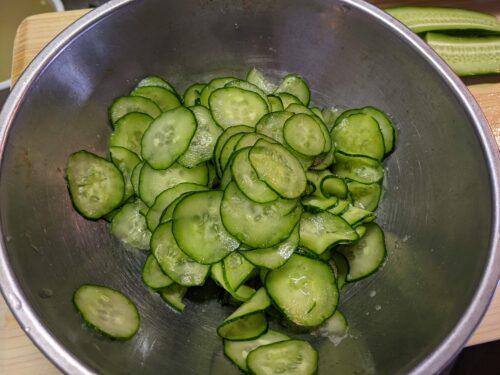
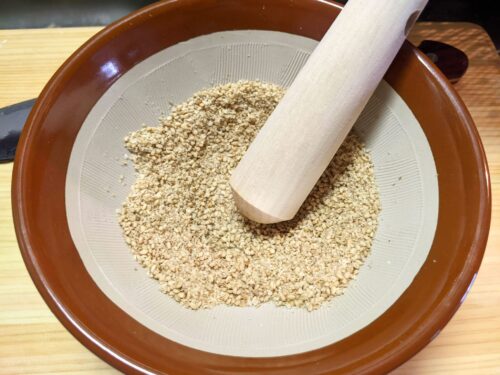
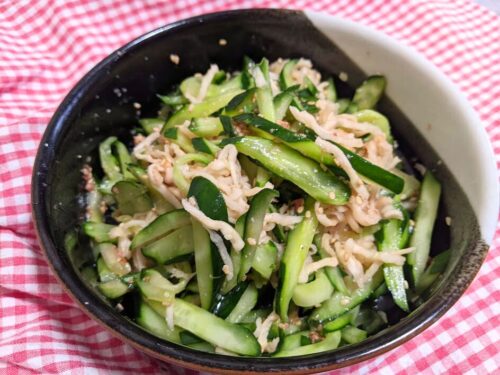
That’s it! You’ve just made a refreshing, slightly tangy, slightly sweet, and very sesame-y salad that goes perfectly with rice, noodles, or as part of a vegan Japanese meal.
🌸 Tips & Variations
- It’s also delicious with ume vinegar, but if you’re making it for kids, apple cider vinegar has a gentler flavor they might enjoy more.
- The soaking water is actually pretty tasty—mildly sweet and full of umami. I often use it in miso soup, and it works really well.
- You can add thinly sliced carrot (same with cucumber, sprinkle with a bit of salt, mix gently, and let it sit for about 10 minutes.) or wakame seaweed for extra color and texture.
- No pressure, but if you’re in the mood to go the extra mile, freshly toasted sesame seeds make a lovely difference.
- This dish keeps well in the fridge for 1–2 days. Perfect for bento lunches!
🥒 About Cucumbers in the U.S.
If you’re in the U.S., you might notice that the common cucumbers are quite different from Japanese ones.
They tend to be thicker, with large seeds and tough skins—a far cry from the crisp, delicate texture of Japanese cucumbers. Honestly, it can be a little disappointing if you’re used to the Japanese variety.
But don’t worry—you can still make this dish delicious with a few easy adjustments:
- Peel the skin completely
- Scoop out the seeds using a spoon
- Slice thinly, then sprinkle with salt and let them sit to draw out moisture
For the best texture and flavor, I recommend using either:
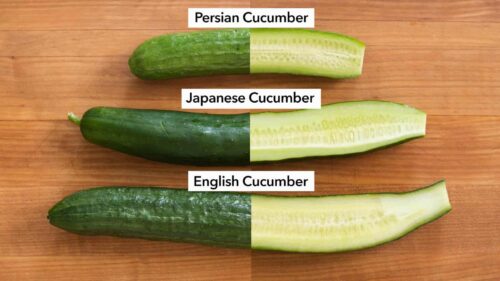
If you can find either of these, they’ll bring you much closer to the light, fresh texture this salad is meant to have.
✨ Final Thoughts
Sometimes, the simplest dishes are the most satisfying.
This kiriboshi daikon and cucumber salad brings out the best of Japanese home cooking: minimal ingredients, beautiful textures, and gentle flavors.

Whether you’re just starting your vegan Japanese cooking journey or looking for a new go-to side dish, this one’s a keeper.
Let me know if you give it a try—and don’t forget to sprinkle a little extra sesame on top. 😉



Coment